Historical Tailoring Masterclasses
Learn to draft, fit, and construct beautiful historical clothing of the 19th century.

Learn to draft, fit, and construct beautiful historical clothing of the 19th century.
Historical Tailoring Masterclasses was started in 2011 to help tailors, historical-reenactors and home sewers learn how to sew beautiful historical reproductions for themselves. Not satisfied with the majority of patterns available or their instructions, and how easy it is to get frustrated when your hard work turns out not to be quite as you imagined, I sought to create a way to more easily teach people the art of historical tailoring.
“Having taken a number of Historical Tailoring Masterclasses, they have greatly added to my knowledge and abilities in reproducing historical garments. Time and treasure well spent!”
Rather than say, “here, follow this pattern exactly and you’ll come out with a passable garment for your reenacting”, I wanted to go more in-depth with my instruction; that you could take a historical pattern and alter it not only to your unique size and shape, but also to closely reproduce that original garment you saw in person at a museum or historical society, or even on Pinterest.
When you register for Historical Tailoring Masterclasses, you’re given your login information, and upon logging in to the website, you have immediate access to about 17+ tailoring projects of different skill levels. These range from projects geared more towards the beginner, such as shirt making, cravat making, and learning the various stitches, through waistcoat and trouser making, up to making several types of more advanced paletots and frock coats. All are based on the techniques and research I’ve learned over the past 15 years or so.
Each lesson has high-quality photographs and written instructions, and the newer projects (since 2019) are accompanied with HD video demonstrating the techniques in detail. I’m a bit of a perfectionist with my work, so I like to get very crisp detail shots of my work as well as a general overhead view of the sewing process.

In addition, students are able to get feedback and direct help from me personally through the support community or by simply emailing me if they prefer. And one of the benefits of being online, is that students can work at their own pace, even in their pyjamas if they really want to, without the rush and stress of traveling to and trying to finish a project at an in-person class.
Projects (except for the older ones) are accompanied by videos explaining and demonstrating the particular steps involved, in addition to the extensive photographs and written instruction. Here's a short video excerpt from one of my trouser making project showing how to draft and cut a pocket bag as an example.
“James Williams is a true Master of historical tailoring. He has mentored me through emails and videos and questions. I can not think of any one in this craft that is more knowledgeable and approachable. If you want to learn the art of tailoring garments then this is the place.”
For each project, students are encouraged to study original garments if they can, be that in-person through a museum or private collection, or through studying original photographs from the period or photos of the original garments, or they can simply follow the instructions to make the garment I’ve demonstrated.
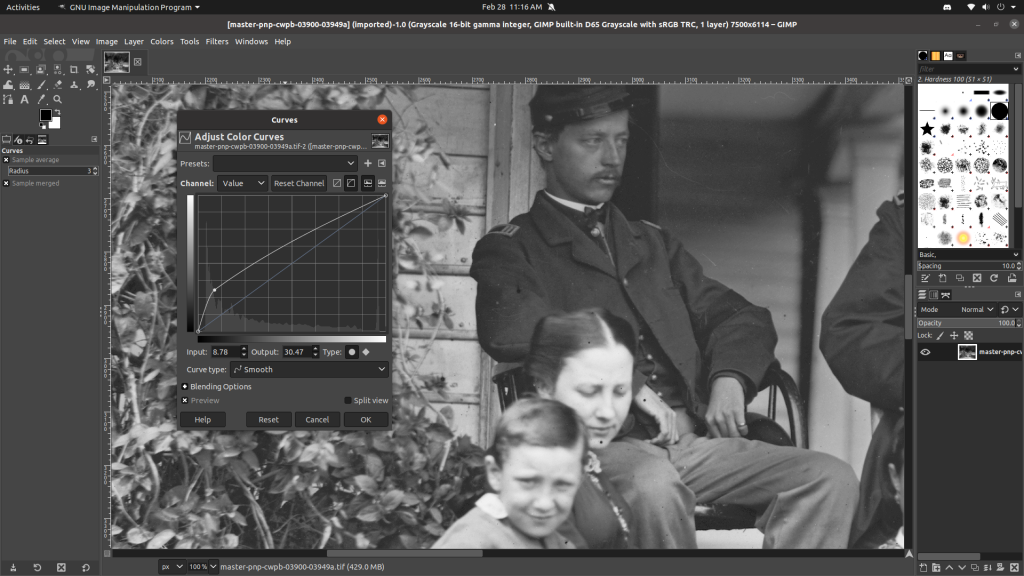
After doing the research, the next step is to take accurate measurements, and to apply those measurements to a period draft. This is a skill in itself to develop over time, as you examine the body for posture, take measurements and develop an eye for seeing what the tape measure cannot. And drafting the clothing pattern itself is a fascinating combination of the ‘scientific’ side of drafting with the numbers and measurements, and the artistic side of working that draft into the example you are copying with the various styling details. The drafting is taught through step-by-step diagrams that are easy to read and follow along with.
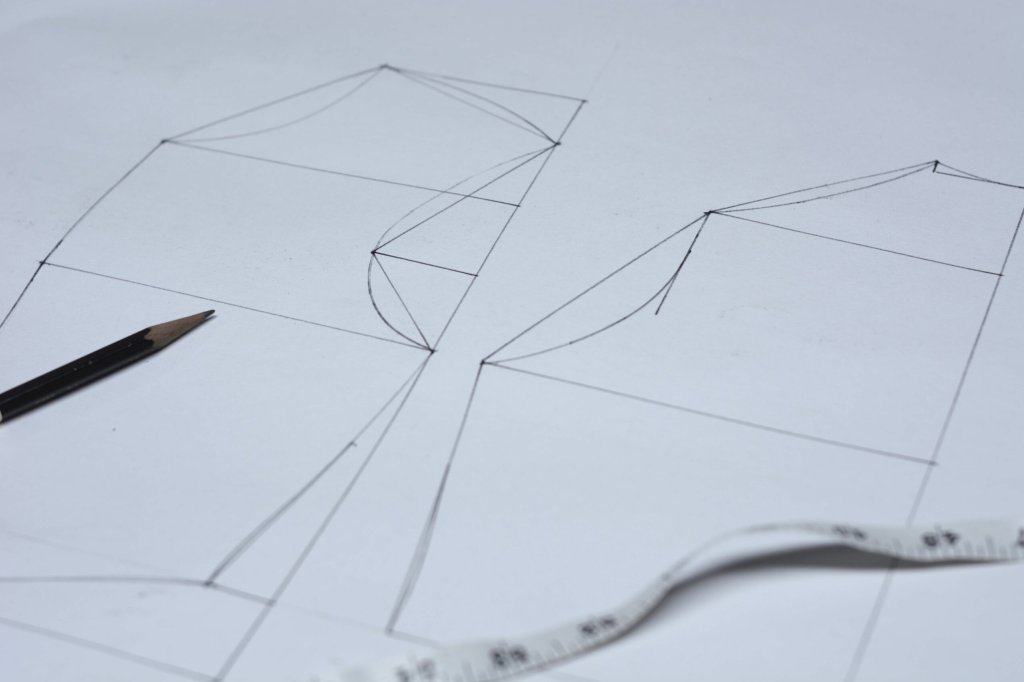
I teach students to make a toile using cotton muslin, an affordable fabric to make your mistakes on. Students then share photos of their draft and the fitting in the support community where I’m able to personally help everyone fit their patterns. Finding the correct remedy for each particular fitting issue can be a challenge, especially at first, so it’s good to have a trained eye to guide you through the process. Typically, it takes one to three fittings before you’re ready to move on to constructing your garment.
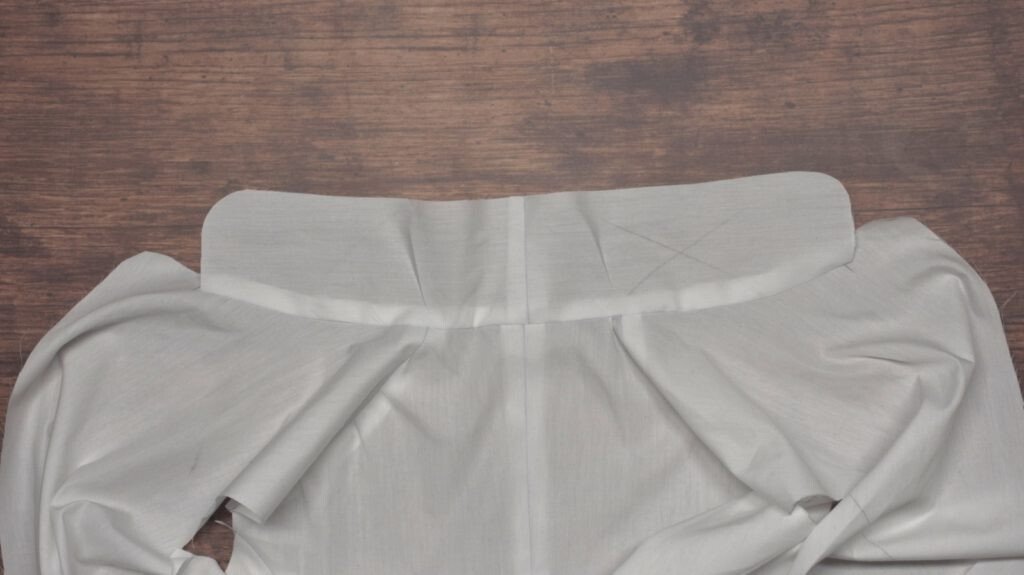
Finally, students move on to the actual construction of their historical clothing. Each step is broken down into more manageable pieces that can usually be done in an hour or two. And here’s where the detailed photos and video really come in. It’s so helpful to be able to see exactly what I’m doing, and it’s easy to go back to watch again if necessary, something you definitely can’t do in a live classroom setting. Each step is taught using period techniques and methods, from laying out and cutting the fabric for example, preparing the pockets, constructing the canvas and working shape into the coat with ironwork, quilting the inner linings, setting the sleeves, and finishing it all off with a beautiful hand made buttonhole. And along the way, students are able to ask questions from me as necessary – I’ve even made entire tutorials just for one student in order to help them succeed in their craftsmanship.
And after going through the process, you’re left with a beautiful reproduction to wear at your next historical outing. It depends on the project of course, as well as your skill level, but the time for completion ranges anywhere from a couple of hours to a couple of months or longer for the more complex frock coats for example. Everything can be done at your own pace – some people really dig in and get everything done quickly, others spread things out over a number of years, applying the instruction to their own additional projects. It’s really up to you.
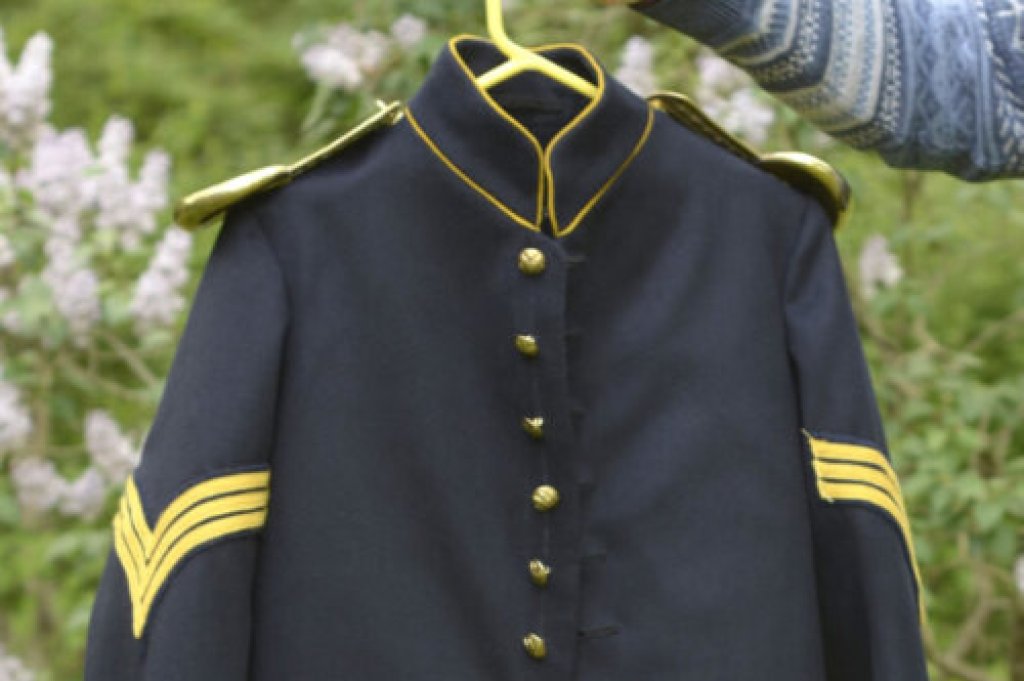
There's a huge library of content, featuring 17 (and counting) projects for you to dive straight into as soon as you join, from full courses on topics ranging from pattern drafting and tailoring period garments using traditional methods, to shorter tutorials for beginners and more advanced tailors alike, covering specific sewing techniques. Learn completely at your own pace from the comfort of your sewing room.

Printable spreadsheets and documents to make your drafting and tailoring a little easier, including:
Measurement Charts
Graduated Rulers
Pattern Drafts
Various Pocket, Collar, Cravat, and Other Patterns
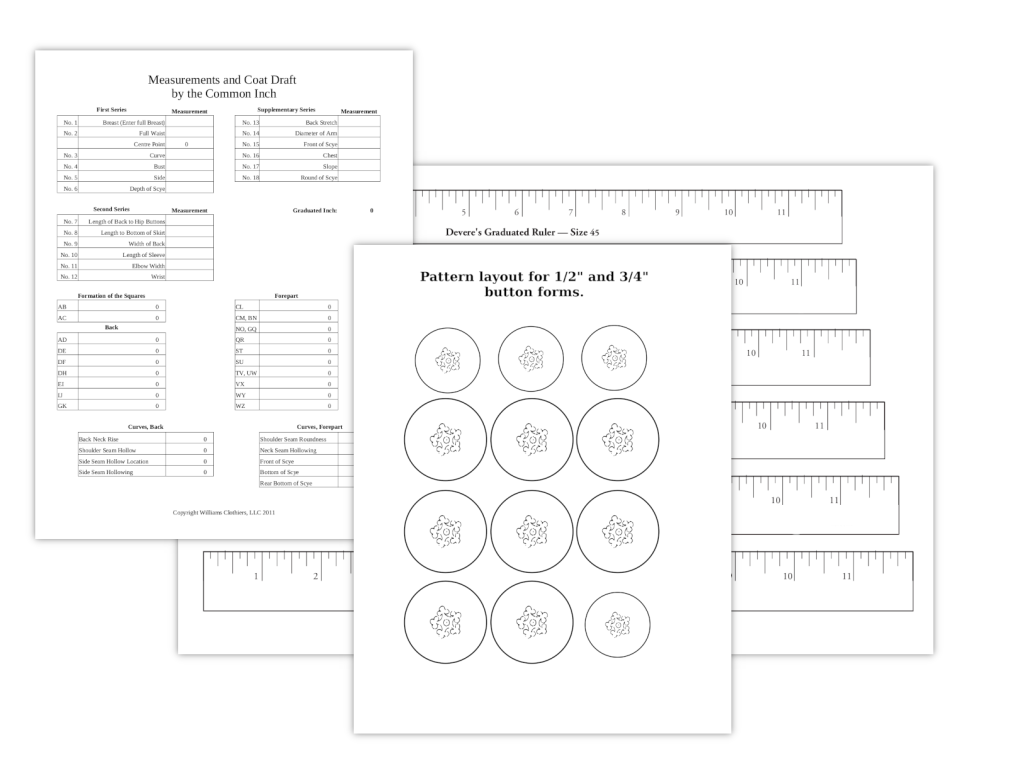
Access to a private, community support forum is included with your Masterclasses membership, and is the best place to go for all of your questions, getting feedback, gaining support, and getting to know like-minded tailoring enthusiasts. It's a combination of the best of Facebook groups, Discord, and the old style discussion forums that used to be very popular.
Prefer to email? You can email me at any time with your questions for personalized support!
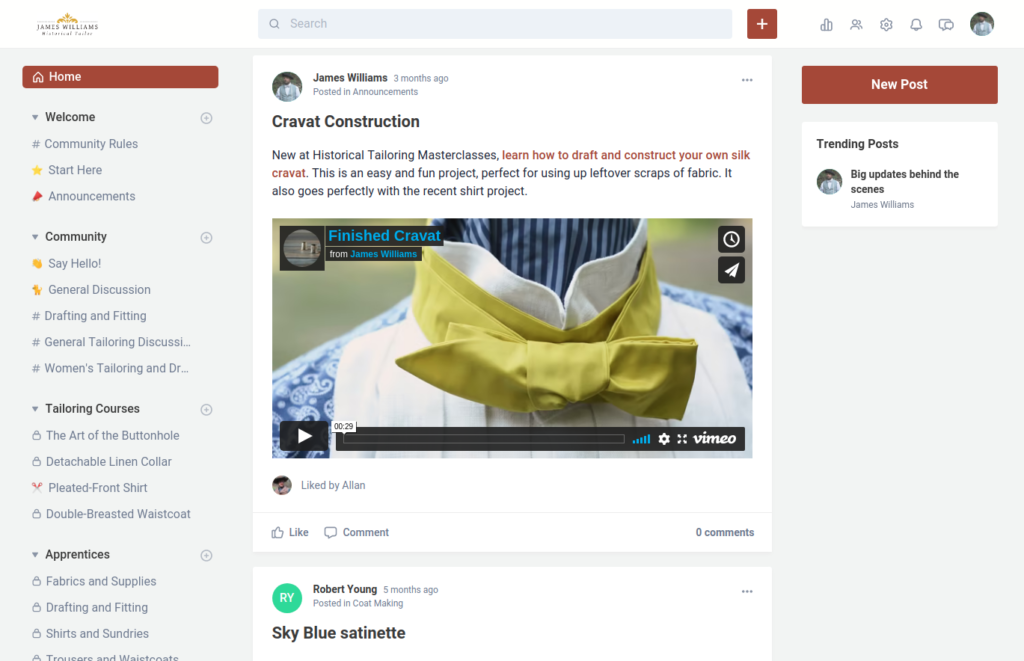
“James Williams’ historical tailoring online workshops are some of the best opportunities to improve your historical tailoring. Whether fairly new to needle and thread or a fairly knowledgeable tailor or seamstress, you can not go wrong by taking these online courses. You will gain a better understanding of how the garments of the day were made and a better knowledge of what the men of the time wore and how they should look. Not only are the workshops wonderful but the support from the facebook group and from James through email is phenomenal. I can’t wait for more workshops to continue my growth in becoming a historical master tailor!”
When you join Historical Tailoring Masterclasses you are fully protected by our 100% Satisfaction Guarantee. If you don’t feel like you’ve received value and you decide you want to cancel any time within the next 30 days, just let us know and you'll be sent a prompt refund.